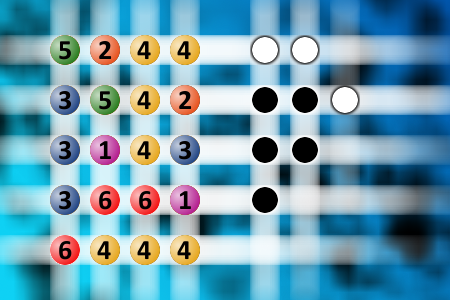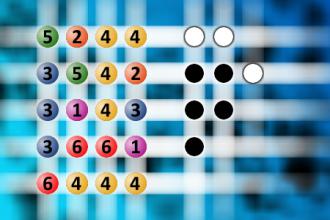Which is a winning combination of digits?
The computer chose a secret code (sequence of 4 digits from 1 to 6). Your goal is to find that code. Black circles indicate the number of hits on the right spot. White circles indicate the number of hits on the wrong spot.Correct answers: 57
The first user who solved this task is Djordje Timotijevic.
#brainteasers #mastermind

Catching Cows
More than anything, Bob wanted to be a cowpoke. Taking pity on him, a rancher decided to hire the lad and give him a chance.
"This," he said, showing him a rope, "is a lariat. We use it to catch cows."
"I see," said Bob, trying to seem knowledgeable as he examined the lariat. "And what do you use for bait?"

